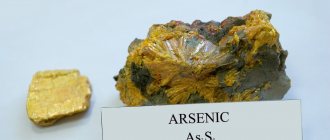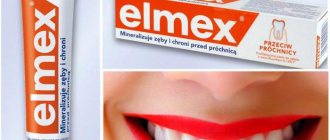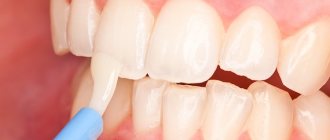| Fluorine | |
| Atomic number | 9 |
| Appearance of a simple substance | Fluorine in a vessel Pale yellow gas, extremely chemically active. Very poisonous. |
| Properties of the atom | |
| Atomic mass (molar mass) | 18.998403 a. e.m. (/mol) |
| Atomic radius | 71 pm |
| Ionization energy (first electron) | 1680.0 (17.41) kJ/mol () |
| Electronic configuration | [He] 2s2 2p5 |
| Chemical properties | |
| Covalent radius | 72 pm |
| Ion radius | (-1e)133 pm |
| Electronegativity (Pauling) | 3,98 |
| Electrode potential | 0 |
| Oxidation states | −1 |
| Thermodynamic properties of a simple substance | |
| Density | (at −189 °C)1.108 /³ |
| Molar heat capacity | 31.34 /(mol) |
| Thermal conductivity | 0,028 /(·) |
| Melting temperature | 53,53 |
| Heat of Melting | (FF) 0.51 kJ/mol |
| Boiling temperature | 85,01 |
| Heat of vaporization | 6.54 (FF) kJ/mol |
| Molar volume | 17.1 ³/mol |
| Crystal lattice of a simple substance | |
| Lattice structure | monoclinic |
| Lattice parameters | 5.50 b=3.28 c=7.28 β=90.0 |
| c/a ratio | — |
| Debye temperature | n/a |
| F | 9 |
| 18,9984 | |
| [He]2s22p5 | |
| Fluorine | |
Fluorine
- an element of the main subgroup of the seventh group, the second period of Mendeleev’s periodic system of chemical elements, with atomic number
9
.
Identified by the symbol F
Fluorum.
Fluorine is an extremely reactive non-metal and the strongest oxidizing agent; it is the lightest element from the halogen group. The simple substance fluorine
(CAS number: 7782-41-4) under normal conditions is a pale yellow diatomic gas with a pungent odor reminiscent of ozone or chlorine (formula F2). Very poisonous.
Story
Diagram of a fluorine atom
The first fluorine compound, fluorite (fluorspar) CaF2, was described at the end of the 15th century under the name “fluor”. In 1771, Karl Scheele obtained hydrofluoric acid.
As one of the atoms of hydrofluoric acid, the element fluorine was predicted in 1810, and isolated in its free form only seventy-six years later by Henri Moissan in 1886 by electrolysis of liquid anhydrous hydrogen fluoride containing an admixture of acidic potassium fluoride KHF2.
origin of name
The name “fluorine” (φθόρος - destruction), proposed by Andre Ampère in 1810, is used in Russian and some other languages; Many countries have adopted names derived from the Latin "Fluorum" (which in turn comes from fluere
- “flow”, according to the property of the fluorine compound, fluorite (CaF2), lowers the melting point of the ore and increases the fluidity of the melt).
Fluorine: destructive or creative?
Alexander Rulev, Doctor of Chemical Sciences,
Irkutsk Institute of Chemistry named after.
A. E. Favorsky SB RAS “Science and Life” No. 10, 2019
I was prompted to write this short note by the desire to talk about an amazing element, as well as tell about its organic compounds, to show how much the introduction of fluorine into a molecule can change its properties. Our scientific group was convinced of this every time, when, while developing methods for the assembly of fluorinated nitrogen-containing heterocycles, they discovered new unexpected reactions.
Among all the chemical elements, the image that most suits him is the ancient Roman god Janus, who, as is known, has two faces. It has a unique reactivity, energetically interacting with almost all elements, and at the same time, its compounds are characterized by high chemical resistance. It heads the 17th group of the table of elements and is the most common in the earth’s crust among all halogens, despite the fact that it was the last of them to be obtained in individual form (not counting, of course, radioactive astatine and tennessine). Being the most electronegative element, it allows us to predict quite confidently its effect on the properties of the molecule, although it still likes to present surprises to scientists. It is an element necessary for human health and at the same time an extremely toxic substance. It was named long before it could be isolated in its pure form. Its Greek name φθόριος translates as 'destroying', but its Latin name fluorum
, meaning 'current'. Of course, we are talking about fluoride. So who is he - a destroyer or a creator?
Nobel laureate in chemistry Ferdinand Frederic Henri Moissan, who first isolated fluorine. Photo: sv:Generalstabens litografiska anstalt / Wikimedia Commons / PD
The history of fluorine chemistry is indeed full of dramatic pages. Many naturalists have suffered greatly, paying with their health and sometimes even their lives, trying to isolate this element! Among them are outstanding chemists, whose names are well known to everyone from school: the Swede Karl Wilhelm Scheele (1742–1786), the Englishmen Humphry Davy (1778–1829) and George Gore (1826–1908), the French scientists Andre-Marie Ampère (1775 –1836), Joseph-Louis Gay-Lussac (1778–1850), Louis Jacques Thénard (1777–1857), Edmond Fremy (1814–1894) and Jerome Nickles (1820–1869), the Belgian Paulin Louet (1818–1850) and brothers Thomas and George Knox of Ireland. Only the famous French chemist Henri Moissan (1852–1907) was able to tame this chemical dragon.
In 1880, Moissan defended his dissertation in which he summarized the results of studying iron and chromium oxides. But he soon changed the direction of his research and took on nothing less than solving the problem of fluorine release. According to the memoirs of his contemporaries, his scientific ambitions were always great. It seemed that the young experimenter was ready to challenge any danger, trying to comprehend the unknown. And he succeeded: on June 26, 1886, by electrolysis of anhydrous hydrogen fluoride containing potassium fluoride, he was able to isolate fluorine for the first time, which, according to Edmond Fremy, “is one of the greatest discoveries in inorganic chemistry, which can have incalculable consequences for science.” Just two days later, Henri Moissan’s success was reported at a meeting of the Academy of Sciences, and he himself presented a short message carefully entitled “The Effect of Electric Current on Anhydrous Hydrofluoric Acid.” Such indecisiveness of Moissan is apparently connected with the failures of his predecessors who tried to obtain fluorine: “I will not be allowed to make final conclusions about the effect of current on hydrofluoric acid; today I am just reporting the first results; I continue this research and hope to soon present new experiments in this area to the Academy. We can put forward various hypotheses about the nature of the resulting gas; It would be most logical to believe that it is fluorine...”
Henri Moissan produces fluoride in his laboratory at the School of Pharmacy in Paris. Facsimile of an instant powder flash photograph from an article by de G. Tissandier // La Nature
, 875, 22 February 1890, p. 177
To test the hypothesis expressed, the Academy of Sciences created a commission, which included the most eminent chemists of the country - Marcelin Berthelot, Henri Debreu and Edmond Fremy. Moissan carefully prepared for the control experiment. Especially for demonstrating the experiment, he obtained very pure anhydrous hydrogen fluoride, which presented considerable difficulties. This is how the scientist himself described this process:
“The preparation of pure and anhydrous hydrofluoric acid begins with the preparation of potassium hydrofluoride (KHF2 - A.R.
), taking all the precautions described by Mr. Fremy.
After obtaining pure salt, it is dried in a water bath at 100° and then the platinum evaporation dish containing it is placed in a vacuum (vacuum desiccator - A.R.
) in the presence of concentrated sulfuric acid and two or three pieces of fused potassium hydroxide in a silver crucible. The acid and caustic potassium are changed every morning for fifteen days, and the vacuum is maintained at about 2 mm Hg. During drying, you must remember to grind the salt daily in an iron mortar in order to renew its surface layer. Once dried, potassium hydrofluoride turns into a powder that can be used to produce hydrofluoric acid.”
Despite such care, the experiment failed: no fluorine was released! Fortunately, the scientist very quickly found the reason for the failure: without the addition of potassium fluoride, which easily dissolves in HF, the electrolysis of anhydrous hydrogen fluoride did not take place due to the low electrical conductivity of the latter. Returning to the original version of the experiment, Moissan, in the presence of the commission, obtained the desired gas, which he told the Academy of Sciences on July 19, 1886. However, only in the third message, “New experiments on the decomposition of hydrofluoric acid by electric current,” dated July 26 of the same year, he confidently concluded that “the gas released during the electrolysis of anhydrous hydrogen fluoride is undoubtedly fluorine.” For this discovery, the scientist was awarded the Nobel Prize in Chemistry in 1906.
Comptes Rendu
magazine with Henri Moissan's first report on the isolation of fluoride. Photo from biodiversitylibrary.org
“During this long work,” Henri Moissan later admitted in his book “Fluorine and Its Compounds,” “we repeatedly had the opportunity to see how far the study of fluorine compounds is from completion. We know little about metalloid fluorides (an outdated name for elements located in the table on the border between metals and non-metals. - A.R.
), very little about metal fluorides, and our knowledge about organic fluorine compounds is simply meager.”
“Will fluorine have any practical use?” - he addressed the audience during a lecture he gave in May 1897 at the Royal Institution of Great Britain. And then he continued: “This question is very difficult to answer. However, I can honestly say that while doing my research, I didn't think much about it. I believe that all the chemists whose attempts preceded mine hardly thought about this either.” It is surprising that almost forty years after Moissan's speech, the possibility of using fluorine or its compounds was still doubtful. The 25th volume of the Technical Encyclopedia (the predecessor of the multi-volume Soviet Encyclopedia), published in 1934, stated that “due to the difficulty of obtaining and storing it, fluorine has no practical use.”
However, today the chemistry of organic fluorine compounds is one of the attractive areas of research for chemists around the world. It may seem strange that compounds whose molecules contain a carbon-fluorine bond are very rarely found in nature: no more than three dozen such substances are known to date. Among them are fluoroacetic acid and its derivatives, isolated from South African plants; fluoroacetone contained in low-growing Australian trees Acacia georginae
;
Phakellia fusca
collected in the South China Sea ;
several fluorinated fatty acids, such as ω-fluoroleic acid, found in the seed oil of the Dichapetalum toxicarium
, native to Sierra Leone. All of these naturally occurring organofluorine compounds are extremely toxic, and the plants, bacteria and fungi that contain them are among the deadliest in the world.
Some natural compounds whose molecules contain a carbon-fluorine bond. These organofluorine compounds are extremely toxic
Despite the fact that fluorine compounds are very rarely found in nature, they play an extremely important role in human life. And if natural fluorine-containing substances can literally be counted on one’s fingers, then the number of organofluorine derivatives obtained by chemists has already exceeded a million! Thus, it turns out that the organic chemistry of these compounds is almost entirely created by man! Where are fluoride-containing products found? The answer to this question can probably be heard: in toothpaste or in the coatings of frying pans. However, fluoride-containing substances are not only organic (aminofluoride) or mineral (monofluorophosphate or sodium fluoride) components of toothpaste or non-stick Teflon coating. Organic fluorine compounds are today widely used to develop new drugs and create materials with unique properties. Ironically, although elemental fluorine is toxic to all living things, fluoride-containing drugs are increasingly used in medical practice. If half a century ago the share of such drugs was only 2%, today about a third of all produced agrochemicals and pharmaceuticals contain at least one fluorine atom, and 20% of them appeared on the market in the first decade of the new century.
Organofluorine derivatives are useful in the prevention of caries and the manufacture of bioceramic prostheses (orthopedic and dental implants), in the treatment of patients with malaria, cardiovascular, oncological and many other diseases.
Some of these drugs have been used successfully for decades. Synthesized in the mid-50s of the last century, 5-fluorouracil, as a derivative of pyrimidine bases - organic nitrogen-containing heterocycles that are part of nucleic acids, immediately attracted the attention of doctors. It turned out that replacing only one hydrogen atom with fluorine in the uracil molecule leads to the creation of a cytostatic that exhibits high antimetabolic activity.
Another fluoride drug, celecoxib, marketed under the brand name Celebrex, is a nonsteroidal anti-inflammatory drug. Since entering the pharmaceutical market in December 1998, it has become one of the most commonly prescribed drugs. A new method developed by our group for obtaining this compound and its analogues was described in an article published in August 2017 in the European Journal of Organic Chemistry
in the “Very important paper” section.
Fluoride-containing drugs are widely used to treat various diseases. These drugs include 5-fluorouracil, celecoxib, fluoxetine, atorvastatin, ciprofloxacin
In 1996, the artificial blood substitute Perftoran, which is an emulsion of perfluorocarbons (hydrocarbon derivatives in which all hydrogen atoms are replaced by fluorine) in water, was approved for medical use and industrial production in the Russian Federation. The magazine “Science and Life” wrote earlier about the dramatic history of its creation (see “Science and Life” No. 2, 1999, article “Blood transfusion: against, for and alternative”).
The activity of fluoride-containing drugs - in particular, one of the most popular antidepressants fluoxetine, produced for more than 30 years, often prescribed by therapists as a lipid-lowering agent of the statin group atorvastatin, a broad-spectrum antibacterial drug ciprofloxacin and others - is believed to be associated with the presence in the molecule of one or more fluorine atoms. Why does the introduction of fluorine or a fluorine-containing group (most often CF3) into a molecule change the physical, chemical and biological properties of the original compound so much? Finding an answer to this question is extremely important for the development of new drugs.
The van der Waals radius of the fluorine atom (1.47 Å) is only slightly larger than the radius of hydrogen (1.20 Å). Therefore, on the one hand, replacing hydrogen with fluorine slightly increases the volume of the molecule, and on the other hand, the conformational changes that often occur cannot but affect the interaction of the drug with the selected target biomolecule. Acid-base properties change, and therefore the ability to form hydrogen bonds, which play an important role in biological systems. It is known that for better absorption by the body, a drug must be highly hydrophilic and dissolve well in water. But only a lipophilic molecule can cross the cell membrane. The modification that occurs when replacing hydrogen with fluorine makes it possible to find a compromise between these two opposing properties. Finally, the flip side of fluorine's extreme reactivity is the formation of strong fluorine-element bonds. For example, a single C–F bond has one of the highest dissociation energies (~480 kJ/mol; for comparison, the average value of this parameter for a C–H bond is ~420 kJ/mol). Hence the high stability and chemical inertness of organofluorine compounds. Moreover, the introduction of fluoride protects the molecule from metabolic degradation, increasing the “survival” of the drug in the body and prolonging its therapeutic effect. This in turn allows you to reduce the dose of the drug. However, in the summer of 2022, scientists at the University of Texas at San Antonio (USA) reported a sensational discovery: it turned out that enzymes produced in the human body are capable of breaking down the C-F bond in the molecules of some drugs. This discovery may influence the strategy for creating new drugs.
The chemistry of organic fluorine derivatives leaves no one indifferent. Every year, chemists around the world synthesize tens of thousands of new organofluorine compounds. Scientists from many countries conducting research in this area meet annually at scientific forums to share their successes and outline ways for further development of the amazing chemistry of an unusual element that occupies the ninth cell of the Periodic Table. And although in recent years scientists have made significant progress in understanding the unique and mysterious properties of fluorine, there is no doubt that this unusual element still holds many secrets.
Lipophilicity (from the Greek λιπος - 'fat' and φιλος - 'friendly') is the ability of a chemical compound to dissolve in fats, oils and non-polar solvents.
Distribution in nature
The fluorine content in atomic percentages in nature is shown in the table:
| An object | Content |
| The soil | 0,02 |
| River waters | 0,00002 |
| Ocean waters | 0,0001 |
| Human teeth | 0,01 |
In nature, significant accumulations of fluorine are found only in the mineral fluorite.
Lentils and onions are relatively rich in fluoride to some extent.
The fluorine content in the soil is due to volcanic gases, due to the fact that their composition usually includes a large amount of hydrogen fluoride.
How is fluoride deficiency expressed in the body?
The causes of fluoride deficiency in the body may be metabolic disorders that do not allow it to be absorbed in the required quantities, and insufficient supply from the outside. In the second case, as a rule, we are talking about drinking water poor in fluoride (less than 0.7 mg/l).
Characteristic symptoms of fluoride deficiency are tooth decay, tooth fragility, and the development of osteoporosis . Nails and hair also become brittle and grow poorly. Due to a decrease in iron content in the body, which is poorly absorbed without fluoride, anemia may occur.
Isotopic composition
Fluorine is a monoisotopic element, since only one stable isotope of fluorine, 19F, exists in nature. Another 17 radioactive isotopes of fluorine are known with a mass number from 14 to 31, and one nuclear isomer - 18Fm. The longest-lived radioactive isotope of fluorine is 18F, with a half-life of 109.771 minutes, an important source of positrons used in positron emission tomography.
Nuclear properties of fluorine isotopes
| Isotope | Relative mass, a.m.u. | Half life | Type of decay | Nuclear spin | Nuclear magnetic moment |
| 17F | 17,0020952 | 64.5 s | β+ decay in 17O | 5/2 | 4.722 |
| 18F | 18,000938 | 1.83 hours | β+ decay in 18O | 1 | |
| 19F | 18,99840322 | Stable | — | 1/2 | 2.629 |
| 20F | 19,9999813 | 11 s | β− decay in 20Ne | 2 | 2.094 |
| 21F | 20,999949 | 4.2 s | β− decay in 21Ne | 5/2 | |
| 22F | 22,00300 | 4.23 s | β− decay in 22Ne | 4 | |
| 23F | 23,00357 | 2.2 s | β− decay in 23Ne | 5/2 |
Magnetic properties of nuclei
The nuclei of the 19F isotope have half-integer spin, so these nuclei can be used for NMR studies of molecules. The 19F NMR spectra are quite characteristic of organofluorine compounds.
Electronic structure
Application of the MO method for the F2 molecule
The electronic configuration of the fluorine atom is as follows: 1s22s22p5. Fluorine atoms in compounds can exhibit an oxidation state of −1. Positive oxidation states are not realized in compounds, since fluorine is the most electronegative element.
Quantum chemical term of the fluorine atom - ²P3/2
Molecule structure
From the point of view of molecular orbital theory, the structure of a diatomic fluorine molecule can be characterized by the following diagram. The molecule contains 4 bonding orbitals and 3 antibonding orbitals. Obviously, the bond order in the molecule is 1.
Fluorine content and formation
Fluorine in silicate melts is associated with cations of increased basicity, significantly affecting the structure of the melts, and contributes to the occurrence of segregation. Fluorine is characteristic of hydrothermal systems. The most important minerals enriched with fluorine (% by weight): fluorite 47.81-48.8, fluorine-apatite up to 3.8, mica 0.1-3.5, amphiboles 0.1-3.5, villiomit 45.24 , topaz 13.01-20.45, sphene 0.1-1.35, cryolite 54.4. Fluorine is obtained by electrolysis of HF in a medium of molten KH2F3 or KHF. Fluorine is also formed during the thermal decomposition of some higher fluorides (for example, SbF3). The resulting fluorine contains up to 5% HF, which is removed by freezing followed by absorption with sodium fluoride. Fluorine is stored in a gaseous state (under pressure) and in a liquid form (when cooled with liquid nitrogen) in metal devices.
Receipt
Laboratory method for producing fluorine
The source for the production of fluorine is hydrogen fluoride HF, which is obtained mainly either by the action of sulfuric acid H2SO4 on fluorite CaF2, or by processing apatites and phosphorites.
Laboratory method
Laboratory conditions - fluorine can be obtained using chemical plants. Copper vessel 2, which has holes in the bottom, is placed in a copper vessel 1 filled with KF·3HF melt. A thick nickel anode is placed in vessel 2. The cathode is placed in vessel 1. Thus, during the electrolysis process, fluorine gas is released from tube 3, and hydrogen from tube 4. An important requirement is to ensure the tightness of the system; for this, plugs made of calcium fluoride with a lubricant of lead (II) oxide and glycerin are used.
In 1986, while preparing for a conference to celebrate the 100th anniversary of the discovery of fluorine, Karl Christe discovered a method for the purely chemical production of fluorine using the reaction in a hydrogen fluoride solution of K2MnF6 and SbF5 at 150 °C:
K2MnF6 + 2SbF5 → 2KSbF6 + MnF3 + ½F2 2K2MnF6 + 4SbF5 → 4KSbF6 + 2MnF3 + F2 Although this method has no practical application, it demonstrates that electrolysis is not necessary.
Industrial method
Industrial production of fluorine is carried out by electrolysis of a melt of acidic potassium fluoride KF·3HF (often with the addition of lithium fluoride), which is formed when the KF melt is saturated with hydrogen fluoride to a content of 40-41% HF. The electrolysis process is carried out at temperatures of about 100 °C in steel electrolyzers with a steel cathode and a carbon anode.
What is dangerous about an excess of fluoride in the body? Fluoride poisoning
An excess of fluoride in the body can be a much greater evil for the human body than its deficiency. Just 20 mg of this mineral causes serious fluoride poisoning, and 2 grams is fatal.
Acute fluoride gas poisoning causes damage to the eyes (burns, conjunctivitis, eczema of the eyelids) and respiratory organs (ulceration of the mucous membranes, loss of voice, nosebleeds, bronchitis, pneumonia), as well as severe circulatory disorders. The liver and heart muscle may be damaged, leukopenia, various abnormalities in the functioning of the cardiovascular and nervous systems, and metabolic disorders may develop. In case of poisoning through the gastrointestinal tract (for example, with mouse poison), convulsions, a sharp decrease in blood pressure, nausea, bloody vomiting and diarrhea begin, and there is a high probability of falling into a coma.
Chronic fluoride poisoning (fluoridism) also poses a serious threat to health, especially since its diagnosis is difficult. The cause may be excessively fluoridated water (more than 4 mg/l), industrial waste that is not disposed of according to the rules, poisoning the external environment, non-compliance with safety precautions in the production of superphosphates, poisoning of soils and plants with agrochemicals, etc. At first, the teeth and gums become extremely sensitive, then there is abrasion of teeth, damage to them by caries, periodontal disease, nosebleeds. The bronchi, lungs, heart, gastrointestinal tract, liver, circulatory system and blood vessels are affected... In general, pathological changes grow like a snowball and affect the entire body, which can, with continued intoxication and lack of treatment, lead to disability and premature death.
Chemical properties
The most active non-metal, it interacts violently with almost all substances (rare exceptions are fluoroplastics), and with most of them - with combustion and explosion. Contact of fluorine with hydrogen leads to ignition and explosion even at very low temperatures (down to −252°C). Even water and platinum burn in a fluorine atmosphere:
2F2 + 2H2O → 4HF + O2
Reactions in which fluorine is formally a reducing agent include the decomposition of higher fluorides, for example:
XeF8 → XeF6 + F2 MnF4 → MnF3 + 1/2 F2
Fluorine is also capable of oxidizing oxygen, forming oxygen fluoride OF2.
Application
Means. Part of the free phosphorus is used to obtain a variety of fluorine-containing materials (electrolytes, solvents, varnishes, surfactants, lubricating fluids, insecticides, pesticides, blood substitutes, pharmaceuticals, etc.). F. is used in the production of uranium hexafluoride UF6, boron trifluoride BF3, graphite fluorides CFn and other elements (WF6, NF3, SF6, CF4, SbF5, XeF6, etc.). Used in ArF* or KrF* excimer lasers.
F. is highly toxic. Irritating to skin, mucous membranes of the nose and eyes; causes dermatitis, skin burns, conjunctivitis, pulmonary edema.
Application in chemical activities (chemical industry)
Fluorine gas is used to produce:
uranium hexafluoride UF6 from UF4, used to separate uranium isotopes for the nuclear industry. chlorine trifluoride ClF3 - a fluorinating agent and a powerful oxidizer of rocket fuel sulfur hexafluoride SF6 - a gaseous insulator in the electrical industry of metal fluorides (for example, W and V), which have some useful properties freons - good refrigerants teflon - chemically inert polymers of sodium hexafluoroaluminate - for subsequent production aluminum by electrolysis of various fluorine compounds
Rocketry
Fluorine compounds are widely used in rocket technology as an oxidizer for rocket fuel.
Application in medicine
Fluorine compounds are widely used in medicine as blood substitutes.
Fluoride in medicine
The use of fluorine in medicine is due to its properties and role in human physiological processes.
The use of fluoride-containing drugs and dietary supplements to improve the condition of teeth and bones and to prevent osteoporosis (Vitaftor, Sodium fluoride, Fludent, etc.) is widespread. For fluoridation of milk and permanent teeth (saturation of enamel and dentin with fluoride compounds), all kinds of sprays, ointments, gels and varnishes (“Vitoftor”, “Sensigel”, “Ftorlak”, etc.) are actively used. Deep fluoridation is carried out only by a dentist using special equipment. This procedure not only prevents caries, but also promotes the formation of enamel in children, helps existing dental restorations last longer in adults, and reduces hypersensitivity.
Fluorine in combination with iodine inhibits the excessive production of thyroid hormones and normalizes the secretory activity of the thyroid gland in Graves' disease (hyperthyroidism).
Fluoride-containing medications are used in the treatment of cancer. For example, the antitumor drug Fluorouracil has been used since the mid-twentieth century to this day.
Many medications intended for the treatment of neuropsychiatric diseases (schizophrenia, epilepsy, etc.) include fluorine atoms: muscle relaxants, neuroleptics, tranquilizers and sleeping pills.
Fluoride is also included in a number of glucocorticoids prescribed for dermatological diseases: Betamethasone, Dexamethasone, Fluprednisolone, etc.
Modern pharmacology is closely linked with fluorine chemistry, and today atoms of this microelement are included in drugs being developed for a wide variety of ailments .
Biological and physiological role
Fluorine is a vital element for the body. In the human body, fluorine is mainly found in tooth enamel in the composition of fluorapatite - Ca5F(PO4)3. With insufficient (less than 0.5 mg/liter of drinking water) or excessive (more than 1 mg/liter) consumption of fluoride, the body can develop dental diseases: caries and fluorosis (mottling of enamel) and osteosarcoma, respectively.
A low fluorine content destroys enamel by leaching fluorine from fluorapatite to form hydroxoapatite, and vice versa.
To prevent caries, it is recommended to use toothpastes with fluoride additives or drink fluoridated water (up to a concentration of 1 mg/l), or use local applications of a 1-2% solution of sodium fluoride or stannous fluoride. Such actions can reduce the likelihood of tooth decay by 30-50%.
The maximum permissible concentration of bound fluorine in the air of industrial premises is 0.0005 mg/liter.
Why is fluoride needed for the human body?
Now let’s answer the central question of the article: why, why is fluoride needed for the human body? Most of this microelement is found in our teeth (0.02%), bones (0.2–1.2%), thyroid gland and skin. It is found to a lesser extent in almost all biological substances. On average, about 2.6 grams throughout the body.
Perhaps everyone has heard about the benefits of fluoride toothpastes. There is no need to dispute this fact, because fluoride (in small quantities, of course) is necessary for the formation and maintenance, strengthening of the enamel covering the dental tissue and the dentin itself. It combines with calcium and phosphorus to prevent the development of caries and the appearance of microcracks. However, in areas where drinking water is adequately enriched with this microelement, you should not constantly use fluoridated pastes, as this can cause fluorosis - oversaturation of tissues with fluoride, which is usually expressed in spotting, darkening of the enamel, and, even worse, in disturbances in the structure and bone deformations. The presence of fluoride in the food of the expectant mother contributes to the birth of a child less susceptible to caries.
Bones will also be stronger with an adequate supply of this mineral. Fluoride is needed for normal skeletal growth and speeds up recovery in case of fractures . For older people, fluoride is valuable as a means of preventing osteoporosis.
The effect of fluoride on the thyroid gland is to inhibit its activity , which has long been adopted by doctors in the treatment of a number of endocrine disorders, such as hyperthyroidism (Graves' disease).
A positive effect of optimal fluorine content in the body on the immune system and hematopoietic functions , on regeneration in wounds and burns, as well as on the absorption of iron has been noted.
The radioprotective (protecting against radiation) effect of fluorine has been revealed: it prevents the deposition of strontium radionuclide in bone tissue and protects against strontium irradiation , and promotes the removal of heavy metal salts.
As we can see, by participating in mineral metabolism, fluorine has a multifaceted effect on the human body.
Additional Information
Fluorides Fluorine compounds in rocket technology Fluorine compounds in medicine Category:Fluorine compounds
Fluorine, Fluorum, F(9)
Fluorine (Fluorine, French and German Fluor) was obtained in a free state in 1886, but its compounds have been known for a long time and were widely used in metallurgy and glass production. The first mention of fluorite (CaP) under the name fluorspar (Fliisspat) dates back to the 16th century. One of the works attributed to the legendary Vasily Valentin mentions stones painted in various colors - flux (Fliisse from the Latin fluere - to flow, pour), which were used as fluxes in the smelting of metals. Agricola and Libavius write about this. The latter introduces special names for this flux - fluorspar (Flusspat) and mineral fluors. Many authors of chemical and technical works of the 17th and 18th centuries. describe different types of fluorspar. In Russia these stones were called fin, spalt, spat; Lomonosov classified these stones as selenites and called them spar or flux (crystal flux). Russian craftsmen, as well as collectors of mineral collections (for example, in the 18th century, Prince P.F. Golitsyn) knew that some types of spar when heated (for example, in hot water) glow in the dark. However, Leibniz, in his history of phosphorus (1710), mentions thermophosphorus (Thermophosphorus) in this regard.
Apparently, chemists and artisan chemists became acquainted with hydrofluoric acid no later than the 17th century. In 1670, the Nuremberg artisan Schwanhard used fluorspar mixed with sulfuric acid to etch patterns on glass goblets. However, at that time the nature of fluorspar and hydrofluoric acid was completely unknown. It was believed, for example, that silicic acid had a pickling effect in the Schwanhard process. This erroneous opinion was eliminated by Scheele, who proved that when fluorspar reacts with sulfuric acid, silicic acid is obtained as a result of the corrosion of a glass retort by the resulting hydrofluoric acid. In addition, Scheele established (1771) that fluorspar is a combination of calcareous earth with a special acid, which was called “Swedish acid”.
Lavoisier recognized the hydrofluoric acid radical as a simple body and included it in his table of simple bodies. Hydrofluoric acid was obtained in more or less pure form in 1809. Gay-Lussac and Thénard by distilling fluorspar with sulfuric acid in a lead or silver retort. During this operation, both researchers were poisoned. The true nature of hydrofluoric acid was established in 1810 by Ampere. He rejected Lavoisier's opinion that hydrofluoric acid should contain oxygen, and proved the analogy of this acid with hydrochloric acid. Ampere reported his findings to Davy, who had recently established the elemental nature of chlorine. Davy completely agreed with Ampere's arguments and spent a lot of effort on obtaining free fluorine by electrolysis of hydrofluoric acid and other ways. Taking into account the strong corrosive effect of hydrofluoric acid on glass, as well as on plant and animal tissues, Ampere proposed calling the element contained in it fluorine (Greek - destruction, death, pestilence, plague, etc.). However, Davy did not accept this name and proposed another - Fluorine, by analogy with the then name of chlorine - Chlorine, both names are still used in English. The name given by Ampere has been preserved in Russian.
Numerous attempts to isolate free fluorine in the 19th century. did not lead to successful results. Only in 1886 did Moissan manage to do this and obtain free fluorine in the form of a yellow-green gas. Since fluorine is an unusually aggressive gas, Moissan had to overcome many difficulties before he found a material suitable for equipment in experiments with fluorine. The U-tube for electrolysis of hydrofluoric acid at 55°C (cooled with liquid methyl chloride) was made of platinum with fluorspar plugs. After the chemical and physical properties of free fluorine were studied, it found wide application. Now fluorine is one of the most important components in the synthesis of a wide range of organofluorine substances. In Russian literature of the early 19th century. fluorine was called differently: hydrofluoric acid base, fluorin (Dvigubsky, 1824), fluoricity (Iovsky), fluor (Shcheglov, 1830), fluor, fluorine, fluoride. Hess introduced the name fluorine in 1831.











